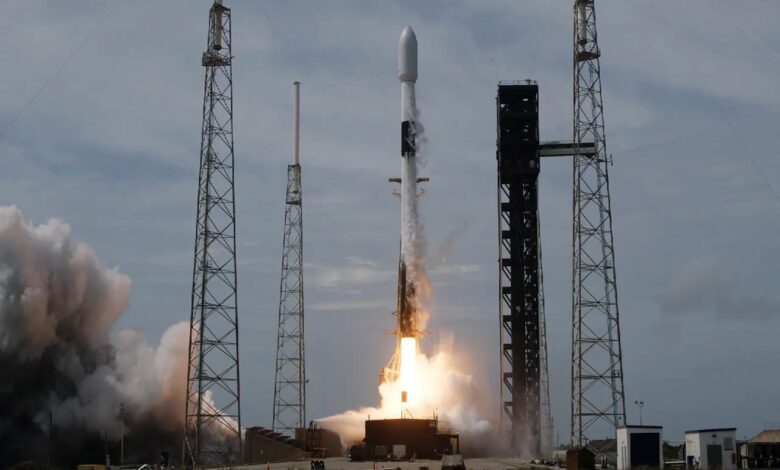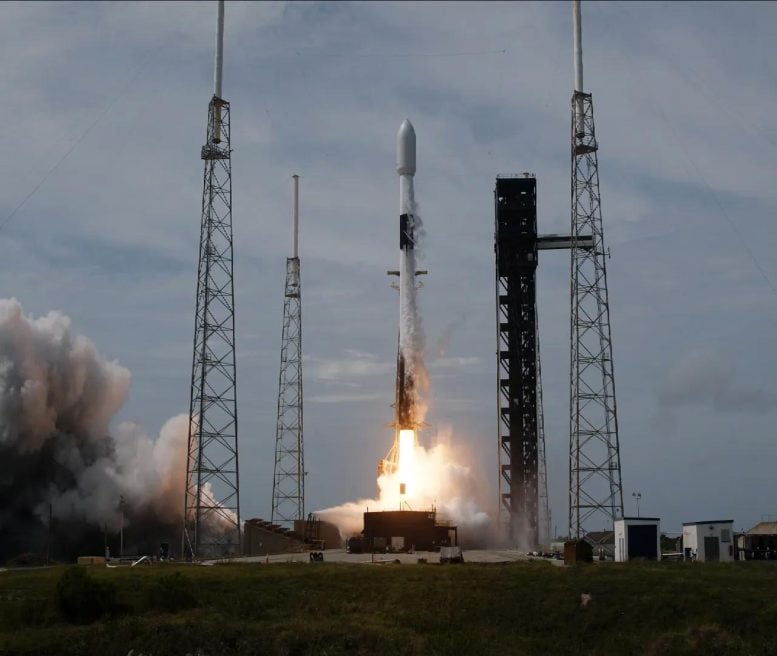Spacecraft Drama High Above Earth


A successful liftoff from Space Launch Complex 40 at Cape Canaveral Space Force Station in Florida as Northrop Grumman’s Cygnus spacecraft, atop a SpaceX Falcon 9 rocket, heads to the International Space Station for the 21st Northrop Grumman resupply mission on Sunday, August 4, 2024. Credit: NASA
Northrop Grumman launched 8,200 pounds of cargo to the International Space Station on a SpaceX Falcon 9 rocket, reaching preliminary orbit shortly after launch. Despite a setback with the first burn due to a sequencing issue, the spacecraft remains on schedule for its original docking time, with NASA planning live coverage of the arrival.
At 11:02 a.m. EDT, 8,200 pounds of scientific investigations and cargo launched to the International Space Station (ISS) on Northrop Grumman’s Cygnus spacecraft for the company’s 21st commercial resupply services mission for NASA. The spacecraft lifted off on a SpaceX Falcon 9 rocket from Space Launch Complex 40 at Cape Canaveral Space Force Station in Florida.
Cygnus reached its preliminary orbit about 10 minutes after launch and completed the deployment of its two solar arrays at 2:21 p.m.
Challenge During Orbit Adjustment
Shortly after launch, the spacecraft missed its first burn slated for 11:44 a.m. due to a late entry to burn sequencing. Known as the targeted altitude burn, or TB1, it was rescheduled for 12:34 p.m. However, the maneuver was aborted shortly after the engine ignited due to a slightly low initial pressure state. There is no indication the engine itself has any problem at this time.
Cygnus is at a safe altitude, and Northrop Grumman engineers are working a new burn and trajectory plan. The team aims to achieve the spacecraft’s original capture time on station, which is currently slated for 3:10 a.m. on Tuesday, August 6.
NASA and its international partners are sending scientific investigations on Northrop Grumman’s 21st commercial resupply services mission. Flying aboard the company’s Cygnus spacecraft are tests of water recovery technology and a process to produce stem cells in microgravity, studies of the effects of spaceflight on microorganism DNA and liver tissue growth, and live science demonstrations for students. Credit: NASA
Live Coverage and Mission Progress
If all remains on track, NASA will provide live coverage of the spacecraft’s arrival beginning at 1:30 a.m. on August 6 on NASA+, NASA Television, the NASA app, YouTube, X, Facebook, and the agency’s website. Additional updates will be posted as needed.
NASA astronaut Matthew Dominick will capture Cygnus using the station’s Canadarm2 robotic arm at approximately 3:10 a.m., and NASA astronaut Jeanette Epps is backup. After capture, the spacecraft will be installed on the Unity module’s Earth-facing port.
This is Northrop Grumman’s 21st commercial resupply mission for NASA.



